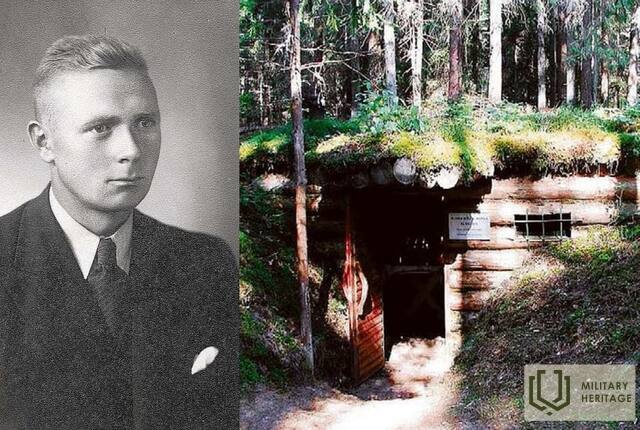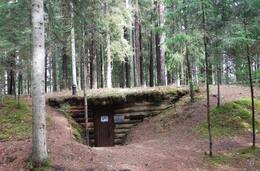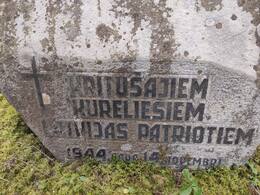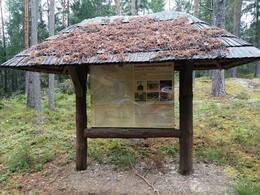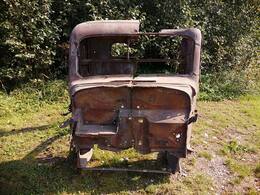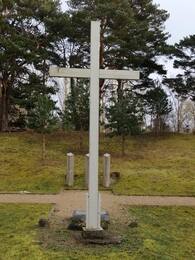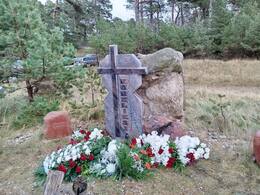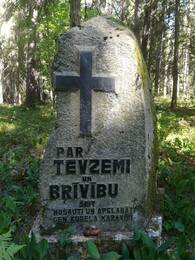Rubenio batalionas II Antrasis pasaulinis karas
Rubenso batalionas buvo gerai ginkluotas ir organizuotas daugiau nei 600 vyrų karinis vienetas, Antrojo pasaulinio karo metu supratęs esąs už abiejų priešiškų okupacinių jėgų ribų, o jų kovotas mūšis yra didžiausias ir ilgiausiai trukęs Latvijos nacionalinio pasipriešinimo judėjimo istorijoje.
RUBENIO BATALIONAS pradėjo formuotis 1944 m. rugpjūtį Bebru parapijoje, vadovaujamas leitenanto Roberto Rubenio iš kureliečių, legionierių, nuo šaukimo į vokiečių kariuomenę pabėgusių jaunuolių ir vietos gyventojų.
Rugsėjo pabaigoje dalinys persikėlė į Kuržemę, kur buvo dislokuotas Usmos (tuometinės Ugalės) valsčiuje, į šiaurę nuo Ilzikių ežero (Ilzikių, Ceplīši, Trebini, Vanagi namuose ir jų apylinkėse). Usmos laikotarpiu batalionas išaugo iki 650 vyrų su keturiomis pilnai sukomplektuotomis kuopomis, greitosios medicinos pagalbos automobiliu ir namų ūkio komanda.
Vadas. A. Druviņš, lc AD Druvičs, vv Jaunzems. 1944 m. sausio 14 d. – gruodžio 9 d. Ugalės, Usmos, Rendos ir Zlėkų valsčiuose vyko įnirtingi mūšiai su policijos generolo Friedricho Jekelno vadovaujamais vokiečių 16-osios armijos, SD ir SS dalinių daliniais.
Jis buvo sunaikintas 1944 m. lapkritį įnirtingose kovose su vokiečių armijos daliniais, kuriose žuvo ir leitenantas Rubenis.
Daugiau informacijos šaltinių
Kureli (rezistence.lv)
Susijusi laiko juosta
Susijusios vietos
Rubenio bataliono muziejus
Rubenio bataliono muziejus yra Ugalėje. Jis skirtas R. Rubenio batalionui, kuris 1944 m. tarnavo ir kovojo Kuržemėje vadovaujant generolui J. Kureliui, kurelių veiklai ir nacionaliniam pasipriešinimo judėjimui. Muziejuje yra ekspozicija apie Latvijos Centrinės Tarybos (LKT) ir jos Ventspilio grupės veiklą, taip pat LKT memorandumas su 188 parašais ir signatarų nuotraukomis, įtrauktas į UNESCO programos „Pasaulio atmintis“ Latvijos nacionalinį registrą. LKT buvo bendras Latvijos aukščiausios politinės vadovybės ir pogrindinės vyriausybės, veikusios Latvijos okupacijos metu nuo 1943 iki 1994 m., centras. Jis buvo įkurtas siekiant koordinuoti įvairių Latvijos pasipriešinimo judėjimų veiklą, siekiant atkurti Latvijos nacionalinę nepriklausomybę. Muziejus taip pat siūlo kelionę į bataliono istorijai reikšmingas vietas (gyvenvietę su rekonstruotu bunkeriu Usmos valsčiuje, mūšio laukus Rendos ir Zlėkų valsčiuose ir kt.).
Rubenio bataliono bunkeris ir mūšio laukai
Restauruotas Rubenio bataliono 2-osios kuopos žeminė yra miške prie Ilziki ežero Usmos valsčiuje. Žeminę galima apžiūrėti iš išorės nemokamai bet kuriuo metu. Tačiau ekskursijas žeminės viduje būtina užsisakyti iš anksto.
Leitenanto Roberto Rubenio batalionas buvo generolo Jānio Kurelio suformuoto karinio dalinio dalis ir žinomas dėl to, kad nepasidavė vokiečių kariuomenei ir demonstravo didelį pasipriešinimą. 1944 m. lapkričio 14–gruodžio 9 d. Ugalės, Usmos, Rendos ir Zlėkų valsčiuose vyko įnirtingi mūšiai tarp 16-osios Vokietijos armijos, SD ir SS dalinių, vadovaujamų policijos generolo Friedricho Jeckelio, ir Kureliečių dalinio bataliono, vadovaujamo leitenanto Roberto Rubenio. Rubenio vadovaujami vyrai buvo gerai ginkluoti ir organizuoti, nesiejo savęs su jokia iš dviejų priešiškų okupacinių jėgų. Jų veiksmai laikomi plačiausiais ir ilgiausiais Latvijos nacionalinio pasipriešinimo judėjimo istorijoje. Mūšiuose prie Rendos ir Zlėkų žuvo apie 250 vokiečių kareivių, o Rubenio vyrai patyrė tik 50 aukų. Tų dienų įvykius simbolizuoja miške atkurta žeminė (velėna dengta, žemėje iškasta rąstinė trobelė), kurioje kadaise buvo apsistoję Rubenio bataliono vyrai.
Zlēku tragedijos memorialinė vieta
Memorialas yra netoli Zlėkų dvaro ansamblio, vakarinėje Karātavkalno dalyje. Ratą sudaro apie dvidešimt riedulių su žuvusiųjų vardais, o centre – maždaug trijų metrų aukščio juodo marmuro obeliskas.
Kai kurie žuvusieji buvo perlaidoti Zlēkų memoriale.
1944 m. gruodį Zlēkų apylinkėse nacistinė vokiečių armija įvykdė didelio masto operaciją prieš civilius gyventojus. Armijų grupės „Nord“ kovinių veiksmų žurnale 1944 m. gruodžio 9 d. 17.30 val. buvo įrašyta, kad per mūšį priešo pusėje žuvo 161 žmogus, priklausęs „Rubenso brigadai ir Raudonosios strėlės daliniams“. Sovietmečiu šis skaičius, matyt, buvo laikomas bendru Zlēkų tragedijos aukų skaičiumi, kalbant apie žuvusius civilius gyventojus.
Veiksmų eiga iš dalies dokumentuota 1944 m. gruodžio 31 d. Vokietijos 16-osios armijos kontržvalgybos skyriaus vadovo ataskaitoje. Joje aiškinama, kad gruodžio 5–9 dienomis, vadovaujant aukščiausiam SS ir policijos vadovui Ostlande, SS oberruppenfiureriui ir policijos generolui Friedrichui Jekelnui, Eichensumpfe („Ąžuolų pelkėje“) vyko didelio masto operacija prieš „Raudonąsias strėles“ ir generolo Kurelio grupės likučius Abavoje.
Paminklas Rubenio bataliono medikams
Paminklas Cirkalės kapinėse kunigams Ārijai Stiebriņai ir Veltai Vaskai, kuriuos vokiečiai sušaudė 1944 m. lapkričio 9 d. Sukūrė skulptorius J. Karlovas.
Abi moteris 1944 m. gruodžio 9 d. sušaudė Vokietijos nacių armijos daliniai kartu su kitais nelaisvėje paimtais Zlėkų apylinkių gyventojais, dezertyrais iš Vokietijos armijos ar panašiais asmenimis.
Pasak pasakojimų, jaunos moterys savanoriškai įstojo į Rubenio batalioną. Jos keliavo kartu su Rubenio batalionu iš Suntaži į Usmą. Tačiau Jekelno operacijos „Eichensumpf“ metu jaunos moterys buvo suimtos kelyje, nuvežtos į Vēlogų girininko namus tardymui ir sušaudytos kartu su nedidele grupe kitų sulaikytųjų. Cirkalės gyventoja moteris pažinojo Āriją ir sugebėjo perlaidoti abiejų mergaičių palaikus Cirkalės kapinių pakraštyje bei prižiūrėjo šias kapines per visą sovietų okupaciją.
Vadovaujant vyriausiajam SS ir policijos vadui Ostlande, SS obergruppenfiureriui ir policijos generolui Friedrichui Jecklenui, gruodžio 5–9 dienomis vyko didelio masto operacija „Eichensumpf“ („Ąžuolų pelkė“), nukreipta prieš „Raudonosios strėlės“ kovotojus ir generolo Kurelio grupę netoli Abavos.
Kampanijos eiga iš dalies dokumentuota 1944 m. gruodžio 31 d. ataskaitoje.
Atminimo paminklai generolo J. Kurelio grupei ir leitenantui R. Rubeniui „Dzelžkalnų“ kapinėse
Atminimo akmenys generolo J. Kurelio ir leitenanto R. Rubenio grupei Puzės parapijos „Dzelzkalnių“ kapinėse. Atidengti 1997 m.
Atminimo ženklai buvo įrengti dar prieš įkuriant Rubenio bataliono muziejų.
Rubenio bataliono mūšių vieta 1944 m. gruodžio 6–9 d.
Atminimo vieta leitenanto R. Rubenio bataliono mūšių vietoje 1944 m. gruodžio 6–9 d., tarp „Vėverio“ ir „Dzilno“ namų Ugalės valsčiuje.
Avarijos vieta netoli Čiubu namų Rendos valsčiuje
„Čiūbų“ namai yra į šiaurę nuo Ozolų, Rendos valsčiuje. Susidūrimas su vokiečiais prie leitenanto L. Znutėno antrosios kuopos, priklausančios leitenantui V. Strautnieko batalionui, Čiūbų namų įvyko 1944 m. lapkričio 16 d.
Baltasis kryžius ir egzekucijos vieta Karostoje
Baltasis kryžius ir egzekucijos vieta priešais Liepojos Karostos kalėjimą. Atidengtas 2000 m.
Generolo Kurelio štabo karininkų sušaudymo vieta
1944 m. liepos pabaigoje, Raudonajai armijai įsiveržus į Latvijos teritoriją, vokiečių okupacinė valdžia leido Rygos rajono policijos viršininkui ir atkurtos Latvijos gvardijos organizacijos 5-ojo Rygos gvardijos pulko vadui Jāniui Veidei įkurti „Rygos gvardijos pulko Generolo Kurelio grupę“. Jos vadu tapo Latvijos Centrinės Tarybos Karinės komisijos vadovas Latvijos armijos generolas Jānis Kurelis.
Kureliai Vidžemėje veikė iki 1944 m. rugsėjo mėn., kai persikėlė į Kuržemę, kur buvo dislokuoti Stiklių namuose Puzės valsčiuje, Ilzikių Usmos valsčiuje, Ilinių Gibuli valsčiuje ir Edolėje bei kitose Šiaurės Kuržemės vietose. Iki 1944 m. spalio pabaigos kureliečiai turėjo apie 3000 ginkluotų vyrų, tarp kurių buvo daug buvusių Latvijos SS savanorių legiono dalinių karių, kurie įstojo į dalinį, kad įgyvendintų savo svajonę – kovą už Latvijos nepriklausomybę.
1944 m. lapkričio pradžioje vokiečių okupacinės valdžios vyriausioji policija ir SS vadas Ostlande, SS oberrupenfiureris Friedrichas Jeckelnas, pradėjo riboti grupės veiklą ir lapkričio 14 d. Stikliuose, Pusios valsčiuje, suėmė kureliečių štabą ir daugiau nei 700 kareivių. Leitenanto Roberto Rubenso vadovaujamas batalionas, turėdamas apie 500 vyrų Usmos apylinkėse, priešinosi ir tęsė kovas iki 1944 m. gruodžio mėn.
1944-19-20 naktį vokiečiai kovojo prieš vokiečius. 1944 m. lapkričio 19-19 d. Liepojos Karaosto kalėjime vyko vokiečių okupacinės valdžios karo lauko teismas, kuriame buvo nuteisti mirti aštuoni generolo Kurelio grupės štabo karininkai - pulkininkas Pēteris Liepiņš, kapitonas Kristaps Upelnieks, kapitonas Jūlijs Mucenieks, leitenantas Jānis Gregoras, leitenantas Jānis Gregoras. leitenantas Filipsonas ir adjutantas Kārlis Valtersas. Trys štabo karininkai – pulkininkas leitenantas Eduards Graudins, leitenantas Arthurs Ankravs ir seržantas Vili Pavulāns dėl įvairių priežasčių buvo atleisti. Lapkričio 20-osios popietę nuteistieji buvo sušaudyti kopose prie Karostos kalėjimo, kur šiandien galima pamatyti baltą kryžių.
1994 m. Liepojos Karostos kopose buvo įkurtas memorialas sušaudytiems karininkams. 2012 m., po to, kai memorialas buvo nuplautas į jūrą, jis buvo atkurtas dabartinėje vietoje.
*** Išversta naudojant www.DeepL.com/Translator (nemokama versija) ***
Paminklas sušaudytiems leitenanto R. Rubenio bataliono kariams
Rubenio bataliono karių kapinės yra Kuldygos–Sabilės kelyje, priešais vietą, kur anksčiau buvo Rendos daktaro disertacija. Prie kelio yra rodyklė, o vos už kelių šimtų metrų nuo kelio – paminklinis akmuo.
Leitenanto Roberto Rubenio batalionas buvo viena iš generolo Jānio Kurelio suformuoto karinio dalinio dalių, kuris nepasidavė vokiečių kariuomenei ir demonstravo aršų vokiečių pasipriešinimą. Usmos laikotarpiu bataliono skaitinė sudėtis išaugo iki 650 vyrų, jame buvo keturios pilnai įrengtos kuopos, greitoji medicinos pagalba ir ūkio komanda. Vadovaujantis štabas: leitenantas R. Rubenis, leitenantas Filipsons, eilinis A. Druviņš, eilinis Šulcs, eilinis Briedis, eilinis seržantas J. Rubenis, eilinis J. Bergs, eilinis Jaunzems.
1944 m. lapkričio 14–gruodžio 9 d. Ugalės, Usmos, Rendos ir Zlėkų valsčiuose vyko įnirtingi mūšiai tarp policijos generolo Friedricho Jekelno vadovaujamų Vokietijos 16-osios armijos, SD ir SS dalinių dalių ir leitenanto Roberto Rubenio vadovaujamo Kurelių dalinio atskiro bataliono. Mūšiuose prie Rendos ir Zlėkų žuvo apie 250 vokiečių kareivių, o Rubenio pulkas patyrė apie 50 aukų.
Po leitenanto Rubenio mirties Druvinšas savo vyrams paskelbė, kad nuo šiol veiks savanoriškai, todėl kelios dešimtys vyrų nusprendė atsiskirti nuo Rubenio bataliono. 1944 m. lapkričio 20–21 d. vokiečių SD dalinys sugavo 11 žmonių grupę ir po tardymo nuvežė į vietinį mišką bei sušaudė.
Rubenio bataliono mūšių vieta 1944 m. lapkričio 18 d.
Atminimo vieta leitenanto R. Rubenio bataliono mūšių vietoje 1944 m. lapkričio 18 d., tarp „Pērkono“ ir „Mežzīlių“ namų Rendos valsčiuje.




